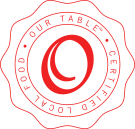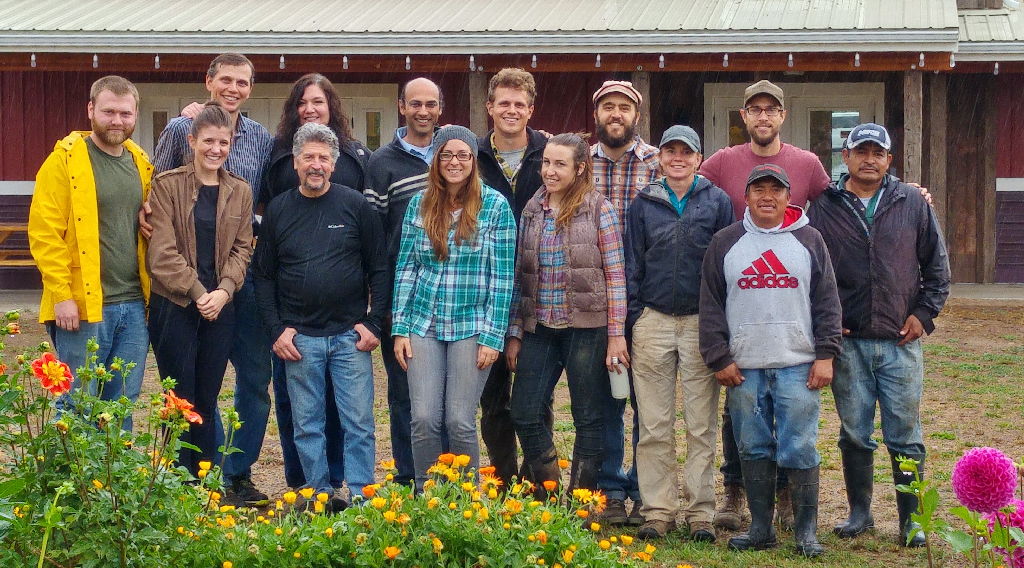In systems design, you start with values. You then build structures that embody these values with the result being that the entire system behaves in a way that is consistent with, and an expression of the values. When we started to think about Our Table, we too started with values – a set of stories, our mythology: the health and wellbeing of people and the land, interdependent relationships, strong communities, and a worldview that sees humans as an integral and important part of the natural world.
Once we had a set of values, we needed to create structures that would embody these values. We knew that we wanted to be a for-profit business. Profit was not our only goal but it was, and remains, a critical one. We wanted to figure out how small-scale community based agriculture can be economically and ecologically self-sufficient.
Cooperatives are legal business structures just like corporations, limited liability companies, or partnerships. In most business structures, ownership and control are directly proportional to the level of capital investment, and profits are returned to investor-owners based on the amount of their investment. By contrast, a cooperative business is owned and democratically controlled by its member patrons. A cooperative exists for the benefit of its members, and profits are distributed in proportion to each member’s relative use or “patronage” of the cooperative’s services. Such a structure seemed more aligned with our values.
For centuries, farmers have found cooperatives to be fruitful arrangements for sharing the inherent risks and rewards of their profession. In agriculture, the risks tend to be large and out of our control – the so-called vagaries of nature. On the flip side, rewards tend to be relatively small so the benefits of sharing the risks generally outweigh any downsides of sharing the profits. Most cooperatives started by farmers are “producers” cooperatives – a group of producers coming together to start a business that addresses some common need. Think Tillamook cheese or Organic Valley dairy. The owners of a producer cooperative are its member farmers.
The cooperatives that most people are familiar with are consumer cooperatives like REI or People’s Food Co-op. These are organizations formed by groups of consumers coming together to pool their purchasing power and get the products they want to buy. Such cooperatives are owned by their member shoppers. Another kind of cooperative is a workers cooperative – a company where the workers or employees are the member-owners.
We wanted all the people involved in growing, raising, processing, distributing, cooking, and eating food to have an equal voice and ownership of their food. A model community owned food system based on a closed loop in which the farmers feed the community and the community feeds the farmers. We had workers, we had producers, and we had consumers; we wanted them all to come together to the proverbial table to solve a common problem. The structure we came up with is called a multi-stakeholder cooperative: a worker cooperative, producer cooperative, and consumer cooperative combined into one.
Incorporated in February 2013, Our Table is one of a handful of multi-stakeholder cooperatives in the country. We have three distinct but interdependent membership groups or classes – workers, regional producers, and consumers. Workers includes everyone who works on the cooperative’s farm and oversees operations for the organization--from farmers to bookkeepers to delivery drivers. Producers are independent farmers and food artisans who grow and produce all the things that we want to eat but cannot or do not grow on our own farm. Consumers are the people who eat the food, which includes all of us in the community. All the members of these three groups become owners of the cooperative when they purchase a membership share. The cost of a membership share is different for each group but, collectively, the members own and control the business and all profits are shared amongst them. Our Board of directors is composed of and elected by the membership.
In our society, this arrangement where members and not investors are the “owners” of a business, is quite rare. This is not to say that investors are not important – capital serves a very important purpose in all economic activity. At Our Table, we issue preferred stock (called Capital Stock) for investors. Capital stock is “preferred” in the sense that it pays dividends (limited to no more than 8% per year) and these dividends are paid before any profits are distributed to members. However, like in all cooperatives, capital is subordinate to members in that capital stock holders have no voting rights on day-to-day operations of the company. In other words, capital is rewarded with monetary returns ahead of members, but it is members who run the business.
The subordination of capital investors to members often makes cooperatives unattractive to fast money investors like venture funds. Such investors are used to their money buying them control of a company as well as the lion’s share of the profits. By contrast, at Our Table, we ask our investors to join with us in a collective effort. We ask investors to share the risk with us and to trust the members, who are at the ground level on a daily basis, to operate the business.
Farmers intuitively understand that when stewarded with love and care, nature produces a bounty and abundance that epitomizes the concept of the whole being greater than the sum of its parts. They also understand that each of us is a part of a larger whole, and coming together to collectively address common problems is a defining feature of what it means to be human. As Pope Francis said on his recent visit to the US: “we human beings are part of the environment. We live in communion with it”. It is in this spirit of communion and collective effort that we have come together at Our Table – workers, producers, consumers, and investors--the entire community--to own our food.
- Narendra Varma
Co-founder, Our Table Cooperative


 RSS Feed
RSS Feed